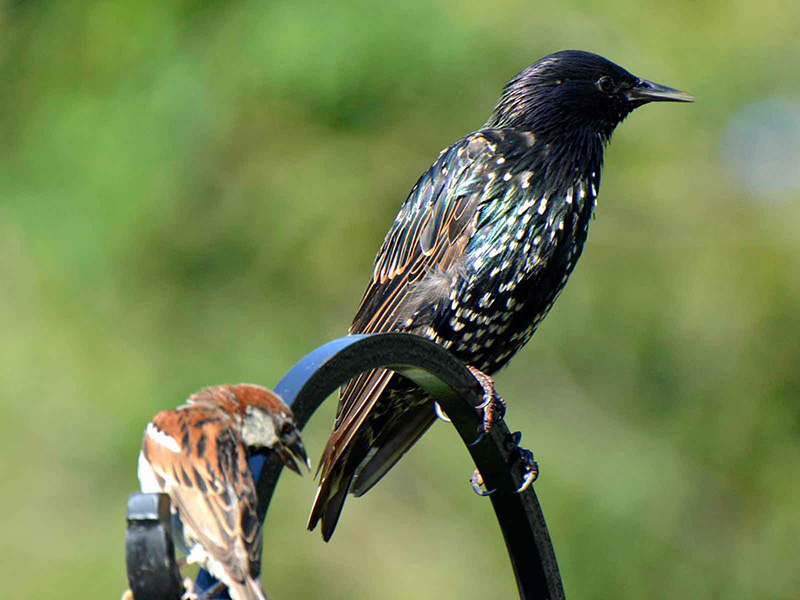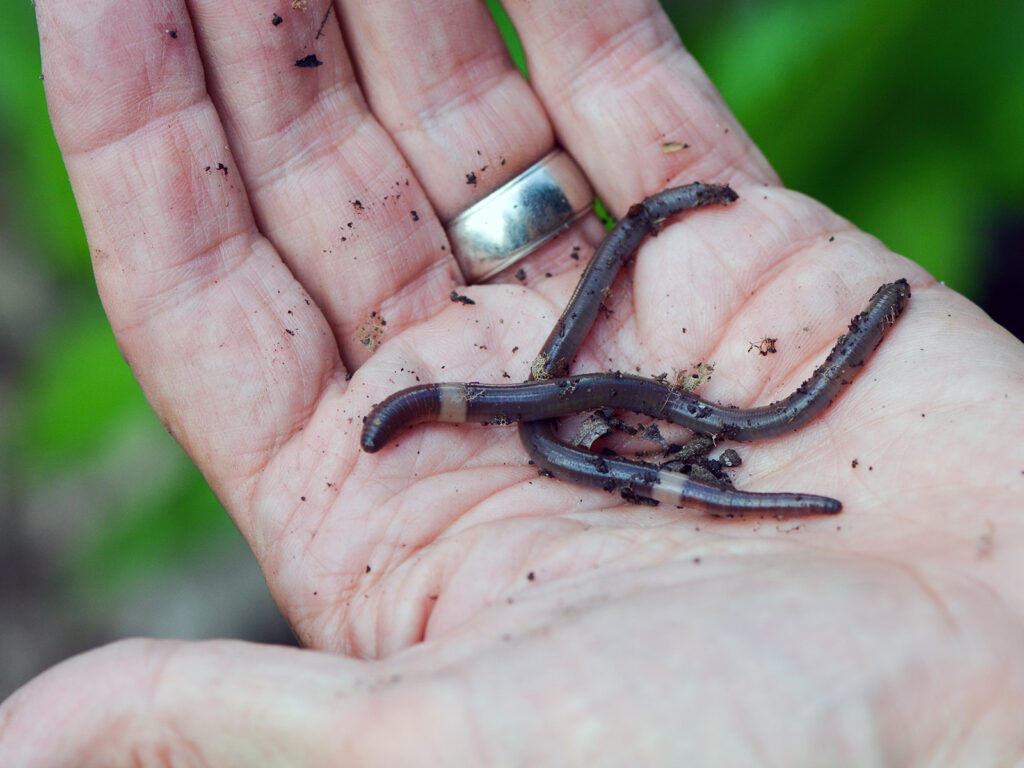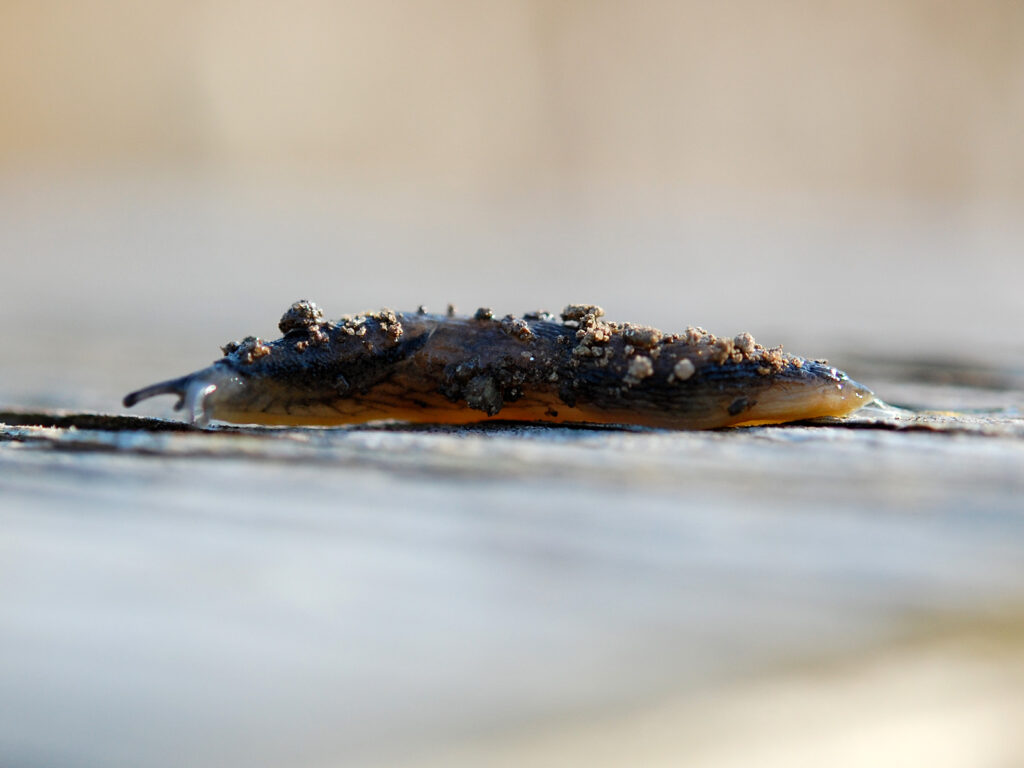
Just as with plants, some non-native creatures invade our habitat garden, such as these aggressive starlings and house sparrows.
That cats, some non-native insects and even some non-native birds are invasive didn’t surprise us, but earthworms? Now that was a shock!
And just as confusing, some snails and slugs are native and some aren’t (below).

Slugs and snails

Both native and introduced slugs are in the Northeast (and in other areas of the country).
Native species are beneficial, which makes sense since ecosystems have evolved over millions of years to function with the species that interacted.
On the other hand, some areas have a serious problem with non-native snails, which are decimating the native ones meant to be there.

Unfortunately, I don’t know which of our slugs and snails are native and which are not. Toads will eat them, and although I suspect we have a good number of toads per square yard, in some years slugs become quite a problem. We try to make our yard as hospitable to toads as possible and hope they eat the non-native ones first!
Resources
- Finger Lakes Land Trust:
- YouTube:
- VIDEO: NY Invasives – videos featuring non-natives species invading NYS
- The Humane Gardener:
Reflections
Firefly larvae prey upon soft-bodied invertebrates, especially snails, slugs and earthworms. Despite their poor reputation, snails and slugs are wonderful creatures in their own right, and they play an important role in breaking down organic matter in the soil. In fact, after we traded hostas for native plants when we first moved to our home, we rarely saw slugs on the green leaves anymore; they’re happier in the rich leafy layer that we nurture at the ground level! Resist the urge to bait or harm these tiny creatures who are just doing their jobs like everyone else—and remember that a firefly will thank you for not stealing her meal.
~ Nancy Lawson, The Humane Gardener “Twinkle Twinkle Little Fireflies”
